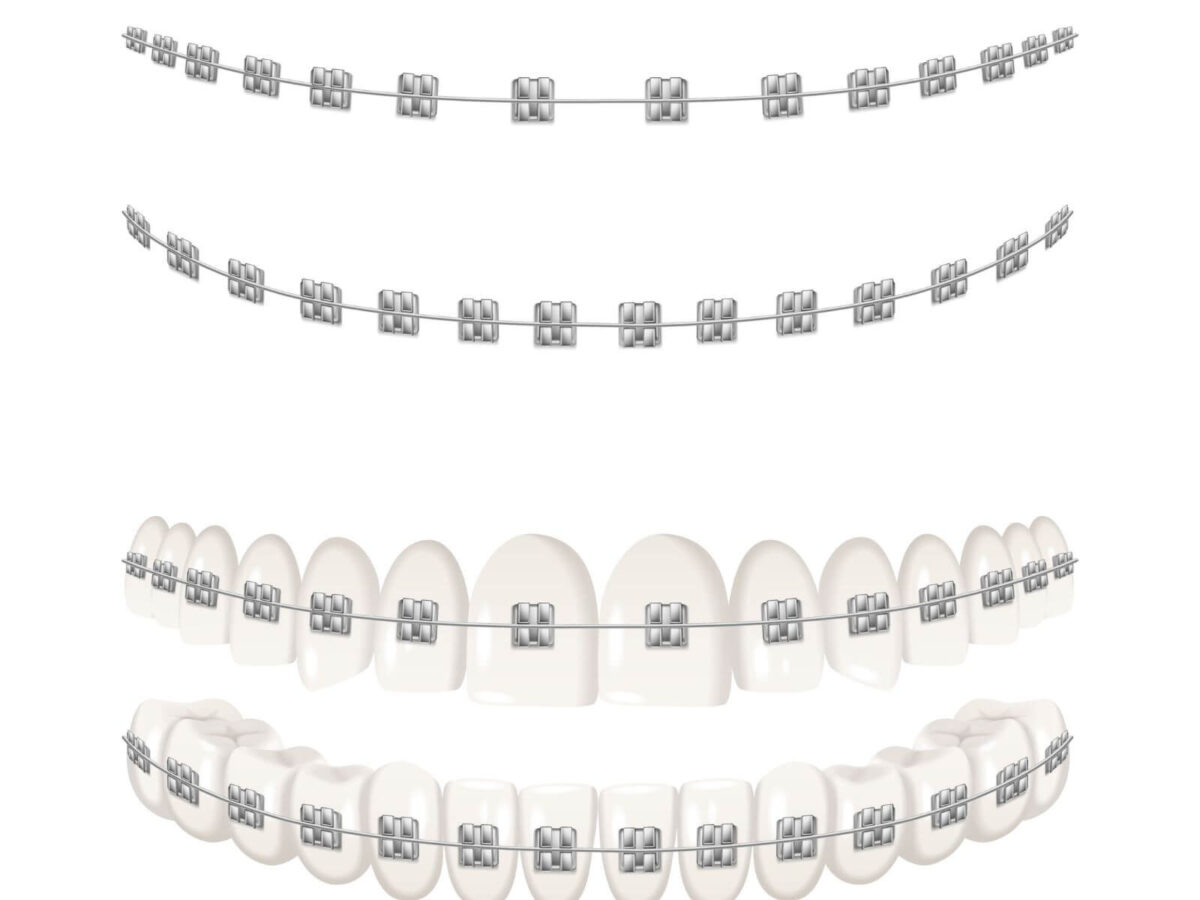Blog
Dental hygiene tips for healthy teeth & gums

Can Braces or Aligners Correct Speech Impediments?
Does speech difficulty affect you or any member of your family? You may not expect it, but recognizing and dealing with speech clarity problems often requires orthodontic dental work. Despite the common belief that braces and aligners help teeth align, they also effectively correct speech problems. Orthodontic treatments help you speak better and feel better about yourself.
Understanding Speech Impediments
Speech problems develop when the brain and body systems do not work correctly together. Our teeth alignment determines how we use our tongue, lips, and air to produce speech correctly. Misaligned teeth create problems with speech when they block the natural flow of sound production. These issues hurt your ability to enunciate and damage your confidence.
Speech problems develop from different sources, including developmental delays, problems with the oral muscles, and dental arrangement issues. During your consultation with your orthodontist, they will explain how orthodontics can make a difference.
Teeth misalignment makes it hard to properly place the tongue against the teeth during speech production of certain sound combinations. The result is a lisp when teeth fail to match their correct position.
The combination of a poorly aligned bite and tooth misalignment causes difficulty producing the sounds “d” and “t.” Talking sounds like whistling due to space and gap issues between teeth. People talk poorly because their tongues cannot move appropriately since they lack enough space in their mouths.
The main orthodontic malformations that trigger speech difficulties, which orthodontists need to address, appear as follows. Problems with tooth alignment represent the primary origin factors generating speech impairments because of the following reasons:
- Overjet teeth
- Spaces and gaps between teeth
- Common orthodontic conditions include overbite, open bite,
- crossbite, and underbite.
- Crowded teeth
Speech Problems Orthodontics Can Fix
Lisping
People with lisps experience difficulty producing the correct sounds corresponding to the letters’ s’ or ‘z’ while speaking. Instead of the proper pronunciation, the wrong sound emerges from the lips, which sounds similar to the ending “th,” like in “path.”
Underbites, overbites, and gaps are the leading causes that trigger lisping problems. Overbites form when upper and lower teeth connect to an excessive extent. The dental condition of an underbite shows a reverse arrangement of overbites because the lower teeth sit in front of the upper teeth. Such problems can be easily detected since the tooth gap reveals itself when the teeth align constantly.
Whistling or Slurring
Poor oral space can lead to slurred speech. Through early identification, the orthodontist can perform two rounds of treatment to manage jaw development before obtaining proper dental eruption from braces during the teenage years. Therapy provides adults with an effective solution to reduce slurred speech.
The impaired speech ability often occurs from insufficient tongue room, typically in crossbites or underbites. Cases of impaired tongue movement develop when teeth or jaws do not allow sufficient tongue movement.
Orthodontic procedures focus primarily on moving teeth into position because this helps the normal development patterns of a person’s mouth and jaw. Opening space by braces for the tongue results from successful tooth alignment and the cure of strange airflow problems that cause unwanted whistling.
Consonant Mispronunciation
Our children’s growth process creates speech problems, and so do the missing teeth during word pronunciation because the sound requires a complete set of adult teeth to create the correct sounds.
Misalignment from poor dental positions makes audio speech more difficult to produce. The speech production of “S,” “T,” or “Ch” words requires tongue contact with the teeth, making them the hardest to pronounce properly. The second category of sounds emerges when people push their tongue from the top ridge towards their mouth roof. Audio production generates two analogous vocalisations that match the sounds of “n” and “d.” A proper match between teeth happens thanks to orthodontic treatment because tongue positioning creates a seal, leading to proper pronunciation when an open bite exists.
How Orthodontic Treatments Can Help
Braces and aligners are orthodontic appliances that target the dental problems commonly encountered by patients. The treatment method of orthodontics helps patients develop stronger word articulation abilities.
Having your teeth properly aligned and achieving bite balance combined with the correct positioning of lips and tongue will make it simpler to correctly pronounce sounds. Orthodontic treatment solves speech problems, including the production of ‘l,’ ‘th’, ‘r’, and ‘s’ sounds as well as ‘l.’
Several ways orthodontics helps resolve speech impediments are:
- People who receive orthodontic treatment with braces or aligners obtain straightened teeth, which lets their tongue and lips support clear speech formation correctly.
- Orthodontic treatment corrects open bites so that the upper and lower teeth align properly, thus allowing patients to pronounce the sounds ‘s’ and ‘z’ properly.
- Orthodontic treatment addresses malocclusion to eliminate lisps and misarticulations frequently arising from tooth misalignment.
The placement of teeth, lips, and tongues achieved through braces and aligners creates favorable conditions for appropriate sound articulation, particularly when producing the ‘th’, ‘r’, and ‘l’ sounds. - A clear speech pattern leads directly to self-confidence enhancement. The benefits of orthodontic treatment include self-esteem growth and a better willingness to communicate effectively.
- The dynamic approach to enhancing speech involves speech therapists joining forces with orthodontists to provide the best outcomes during treatment for improved speech outcomes.
- Post-orthodontic care features practices and exercises that protect speech clarity because they help maintain the duration of obtained improvements.
- Orthodontic treatment is essential for speech enhancement since it resolves particular malalignment problems to deliver better articulation and clearer verbal communication.
Visit your dentist today
Treating speech problems related to different types of misaligned teeth receives beneficial results from Invisalign clear aligners. The alteration of speech after using clear aligners happens briefly when appropriately fitted. Contact your dentist today to determine if orthodontic treatment improves your speech and smile. The Liberty dentist will assess whether your speech problems can be resolved through invisible orthodontics.


